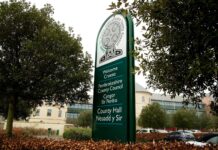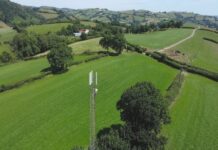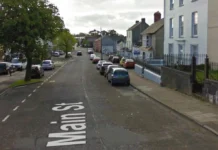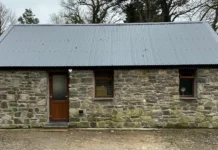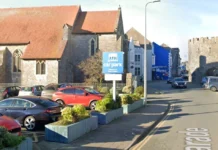Dyfed Powys Police are reminding road users of the risks of collisions with deer at this time of year. As the nights draw in and British Summer Time comes to an end on the 28th October the risk of coming across deer on our country roads will increase especially when people are travelling home from work.
Sergeant Matthew Howells, the force Wildlife Crime supervisor said, “The deer rutting season is in full flow through October and November which sees increasing activity amongst the deer herds within our counties. Road users need to be cautious driving in areas where they know there are deer, where they see deer warning signs and especially on roads with forests on both sides of the road. Deer will indiscriminately cross roads and can appear before a vehicle in a split second.”
Safety tips for drivers
Do take note of deer warning signs, by driving with caution at or below the posted speed limit. Such signs really are positioned only where animal crossings are likely.
Peaks in deer related traffic collisions occur October through December, followed by May. Highest-risk periods are from sunset to midnight followed by the hours shortly before and after sunrise.
Be aware that further deer may well cross after the ones you have noticed.
After dark, do use full-beams when there is no opposing traffic. The headlight beam will illuminate the eyes of deer on or near a roadway and provide greater driver reaction time. BUT, when a deer or other animal is noted on the road, dim your headlights as animals startled by the beam may ‘freeze’ rather than leaving the road.
Don’t over swerve to avoid hitting a deer. If a collision with the animal seems inevitable, then hit it while maintaining full control of your car. The alternative of swerving into oncoming traffic or a ditch could be even worse. An exception here may be motorcyclists, who are at particular risk when in direct collisions with animals.
Some experts say that in the event you are headed for a collision, you should avoid braking at impact (makes the front of the car go down) so that the deer is more likely to pass under the car, as opposed to hitting the windshield. This would not preclude braking before impact.
Only break sharply and stop if there is no danger of being hit by following traffic. Try to come to a stop as far in front of the animals as possible to enable it to leave the roadside without panic.
Report any deer-vehicle collisions to the police (who should be able to contact the local person best placed to assist with an injured deer at the roadside)
Always drive so that you can stop safely within the distance you see to be clear.
Help keep news FREE for our readers
Supporting your local community newspaper/online news outlet is crucial now more than ever. If you believe in independent journalism, then consider making a valuable contribution by making a one-time or monthly donation. We operate in rural areas where providing unbiased news can be challenging. Read More About Supporting The West Wales Chronicle











